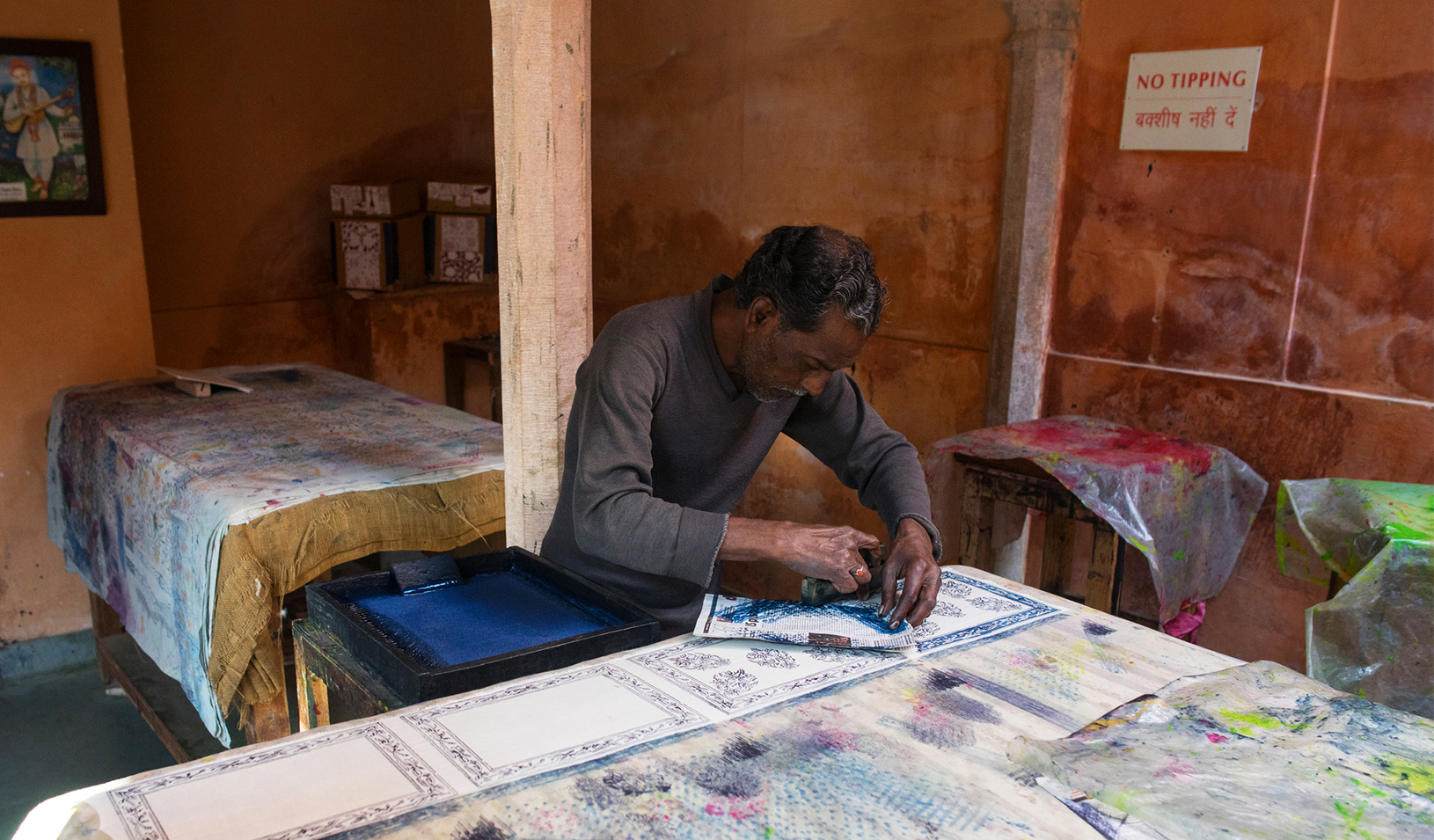
For Chinese professionals leading hectic lives in crowded, polluted city centers, a vacation in the countryside provides a rare opportunity to slow down and breathe fresh air. Besides providing for their own rest and relaxation, these tourists potentially offer a much-needed source of income for rural families who subsist largely on scant revenue from small-scale farming.
Yet, so far, China's farmers have found homestay tourism difficult to develop and sustain. Few have the means to furnish high-quality lodgings, nor the experience to successfully market and manage a tourism business. Local governments do not have the expertise or the financial resources to promote small villages as vacation destinations. And financing from investors outside the community comes with its own problems.
Conventional Tourism Supply Chain
Enter researchers working with the Stanford Institute for Innovation in Developing Economies (SEED, for short) on value chain research aimed at integrating more local products and services into emerging markets. They have developed a new approach to rural tourism in China that would preserve the authenticity of the region, meet the needs of urban travelers, and turn rural farmers into entrepreneurs. By making crucial changes to the supply chain for homestay tourism, they hope to alleviate poverty in rural communities in an economically, socially, and environmentally sustainable way.
The challenge, in essence, is that traditional tourism supply chains largely rely upon intermediaries such as hotel operators and travel agents. Particularly in rural markets, the researchers found that nonlocal businesses dominated the tourism industry. While these investors may be able to construct hotels and other accommodations that bring in wealthy tourists, this type of development can lead to uncontrolled growth that harms the environment and disrupts local culture. In addition, few of the economic benefits ultimately trickle down to the local community.
A case in point is Old Town Lijiang, a historic town in Southwest China and a UNESCO World Heritage Site. The town receives more than 15 million tourists, generating more than $3 billion in tourism revenues annually. But commercial success has come at the steep cost of environmental damage and cultural degradation. As Old Town Lijiang's ancient waterways became contaminated with sewage, and its cobbled streets transformed into a red light district of bawdy nightlife, much of the indigenous Naxi population began to flee the town.
"Relying on outside investors to develop tourism is very common in emerging markets, but causes leakage of economic benefits to outsiders," said Hans Galland, a member of the Stanford research team with 10 years' experience as a tourism investment professional in China.
The researchers hope that their model, which consists of providing farmers with a lodging product financed by microloans, will be more "community-centric," says Vivek Garg, who focused on entrepreneurial innovation in his native India before coming to Stanford. Their concept, he says, will not only grow the economic pie but enlarge "the community's slice of it."
In a recently completed pilot project, the researchers focused on Puxing, a mountain village in southwest China dotted with tea shrubs and fruit orchards. Despite boasting the natural and cultural attractions city dwellers desire, Puxing residents generated just 10% of their income through tourism. Situated 20 minutes away from the Mount Emei and Leshan Giant Buddha Scenic Area, which drew nearly 300 million visitors in 2012, Puxing, the researchers knew, had the potential for tourism development, especially for vacationers who wanted to escape the crowds and enjoy Puxing's unsullied way of life.
On a farm homestay, tourists could join their host family in farm chores, such as picking tea leaves, and learn how to prepare traditional cuisine. They could tap into the area's spiritual heritage by partaking in Buddhist traditions, or time their vacations to coincide with the annual Peach Blossom Festival, which draws as many as 200,000 visitors to the town every spring.

The researchers also found that a few Puxing families had tried to host tourists in their homes, but the homes weren't up to the standards of urban visitors. Typically made from clay, area homes tend to be poorly maintained and energy inefficient. Even if their houses had been in better condition, farmers would have found it difficult to effectively market them to attract a constant stream of visitors, say the researchers, who also discovered that many families resisted the idea of turning their homes over to strangers, wary of the intrusion that tourists would bring. To overcome these impediments, the researchers plan to introduce a new product into the value chain: a 24-square-meter modular pod placed on the farm premises, which farmers could purchase through a loan.
For tourists, pods offer a combination of modern conveniences and small-town hospitality. They get a taste of the farming lifestyle without causing the family any disruption or displacement. They also get to experience Puxing from the best possible vantage point, because pods can be placed in the most appealing and scenic locations on the farm grounds.
Each pod, which includes a bed, sitting area and bathroom, would cost farmers approximately RMB 80,000 (the equivalent of $13,000), and they may be able to obtain a loan on preferential, perhaps even interest-free, terms. "As the owner of both the farm and the homestay pod, farmers are incentivized to make socially optimal decisions and prevent environmental degradation, as unsustainable tourism would create a cost to their farming business," said researcher Tilky Xu, a Stanford doctoral student in economics.
Cooperative Structure for Coordination
Another critical change to the traditional tourism supply chain involves centralized operations. Bearing in mind the difficulties of past attempts at rural tourism, the researchers would incorporate industry leadership and expertise. Farmers in this new model are to be responsible for day-to-day operations and interactions with visitors, but key management functions, such as marketing, quality control and training, would be centralized and financed through a cooperative. Under the guidance of the research team and the local tourism bureau, the centralized platform would help ensure a quality, authentic homestay experience. The idea is to optimize participation from the local community while still welcoming the expertise of tourism professionals in order to produce a profitable, sustainable model. Projections from the pilot study showed that a pod-based homestay model could increase household income in Puxing between 35% and 55%.
However, many questions remain if this is to be a sustainable model for rural tourism. For starters, the community itself may not be structured to support this model, as it is fragmented and has little precedent for cooperative organization. In addition, rural property rights in China are undergoing considerable change, and land issues could erupt if farmland becomes the basis for commercial tourism revenue. Moreover, although this model involves significant participation from farmers, they must still purchase the pods from an outsider and work with a centralized operating platform that may not have the trust or cooperation of the community.
Researchers plan to address these challenges and put their homestay model to the test by building several sample pods in Puxing. At the start of January, the research team embarked on their third field trip to China to prepare to roll out their prototype. If their projections turn out to be correct, their test case could turn an impoverished farming community into a rural tourism market that offers farmers a sustainable source of supplementary income and that preserves their land and traditions. More broadly, the study could point the way towards ways to increase income in rural areas around the world.
"We want to help developing economies use their natural strengths and resources as innovations in the value chains," says Hau Lee, faculty director of SEED and a supply chain expert. "This is an example of how local people can use their own livelihoods — the landscape, their farms, and local foods — to create economic values." Improving the vacation experience for world-weary city dwellers may just turn out to be the best way for these farmers to improve their lives.
The research team is composed of Hans Galland, Vivek Garg and Thomas Yao, all of whom received their MS in business in 2013 from Stanford Graduate School of Business; James Shen, founder and partner at the People's Architecture Office in Beijing, China; and Tilky Xu, a PhD candidate in economics at Stanford University. Professor Hau Lee, Thoma Professor of Operations, Information and Technology in Stanford GSB and the faculty director of SEED, and Nicholas Hope, the director of the Stanford Center for International Development, supervised the project. The China Social Innovation Foundation and Southwest Jiaotong University in Chengdu provided on-the-ground research support.



